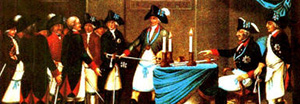
Carl Gotthelf, freiherr von Hund und Alten-Grotkau
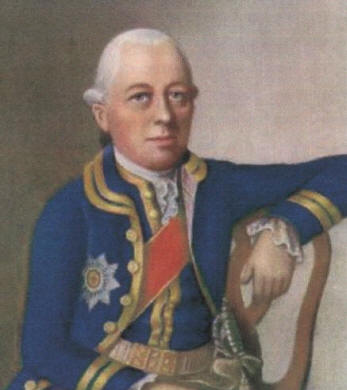
Who was Carl Gotthelf, freiherr von Hund und Alten-Grotkau, founder of strict Observance?
Let us take a note of the speech read on the occasion of his funeral “In honour of his reverend greatness Charles de Hund”: “His birth was so illustrious that, already during the Crusades, his ancestors, having demonstrated at least 16 quarters of nobility, commanded bodies of knights. The first of his branch had his lands in Silesia and Lusace. He died in the middle of the 14th century. The free lord baron Carl Gotthelf von Hund und Alten-Grotkau inherited the lands of Manua, Reuten, Lieszke, Merzdorf, Beewalde, Grosschweidnitz, Dolgowitz, and Lipse through his late father and owned the lands of Unwurde and Kittlitz. He was state counselor to Her Majesty the Empress, an intimate adviser to His Majesty Emperor Charles VII, Chamberlain of His Majesty The Roy Augustus III of Poland, elector of Saxony, head of the States of Upper Lusace, Knight of the Order of St. Anne of Russia.»
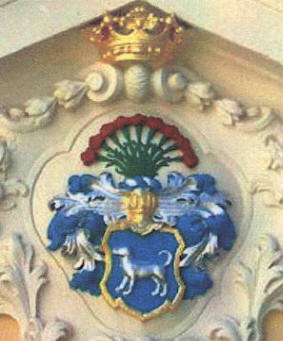
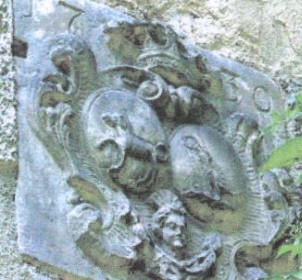
Charles de Hund was born in Manua, one of his fiefdoms, in Upper Lusace, on September 11, 1722, he was orphaned at the age of 14. The daughter of the guardian of his land (Casper Heinrich von Rodewitz), who died at the age of 16, decided to opt for celibacy. At the age of 19, his studies took him to Leipzig. Initiated on 20 March 1742 in Frankfurt-on-the-Main, he attended the “The Three Hammers” Lodge in Naumbourg.
According to Saint-Germain, Baron Rod of Koenisberg and The Empire Marshal and Teutonic Knight von Bieberstein preceded Hund in Templar masonry. However, the first lodge of the Strict Observance was founded in 1751 at unwurde Castle, at the instigation of Baron Hund and with the help of brothers Jacques and Georges Schmidt, M. de Schoenberg, all three officers of the infantry regiment of the Prince of Saxony, as well as brothers von Tanner and Charles Henri Louis Jacobi. Called “The Three Columns,” it symbolized the rebirth and stability of the new Order. Between 1750 and 1751, during one of the many receptions given at his headquarters in Kittlitz, Charles de Hund, “Knight of the Sword” of the Order, was visited by the Scottish general and eminent mason, James Keith. The latter probably influenced the further development of strict observance.
The founders of the Order worked towards a Masonic regime with a chivalrous vocation, in the spirit of the 18th century, a restored and renewed Order of the Temple. An economic plan for the pooling of the brothers’ assets was presented. Was it to buy back some of the assets of the former Templars, to prepare a landing of the Stuarts in Scotland or to promote the establishment of a free state on North American soil? The 7-year war (1756 – 1763) put an end to this type of project. While strict observance counted among its members almost all the gotha of continental Europe (Prussia, Germany, Russia, Poland, Austria, Italy), aristocrats and high-ranking military, Hund, a passionate gentleman, also had to face profiteers, opportunists and crooks. The Order’s critics never failed to mention it. Vigilance was, and remains, always the order of the day.
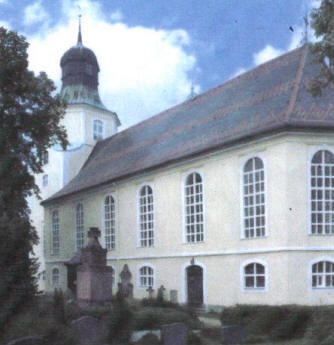
Kittlitz with its suburb of Unwuerde is located near Lôbau in Haute-Lusace. Hund’s family acquired a property in the early 16th century through the marriage of Wenzel von Hund and Marguerite de Nostitz. Charles de Hund, having spent his fortune on his cause, offered the Order the sale of his property for a very advantageous sum, but he refused. He then ceded unwurde Castle in 1769 and its lands to Countess Isabella von Salmour. Charles de Hund had carried out the reconstruction of the Church of the Holy Trinity of Kittlitz. It was at this time that he concealed documents from the Strict Observance, in a box kept near a collateral chapel. There are many remains of the Hund period, apart from the castle rebuilt in part after the fire of 1933, including the funeral chapel of the Hund family, coats of arms in the walls, the church and its secrets…
Today, the castle is owned by Mr. Pohlank. Unwurde and has been a member of Kittlitz since January 2003.
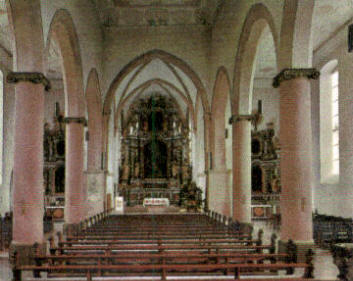
In 1773, upon the return of the visit of the “Charlotte Aux Trois Oillets” lodge and its chapter of Meiningen, Hund fell seriously ill. “The year 1776 and the 8th day of November, at the first hour of the morning, passed very piously into the Lord, with all the sacraments, the very illustrious, very noble, generous and loving Lord Carl Gotthelf, Baron of Hund and Alten-Grottkau, State Councillor of his imperial majesty, private adviser to the Tsar of Russia, holder of the Russian Order of St. Anne, the Knight of the generous lord of Lipsa, Manau and Luntenbeerwalde in Oberlausitz.” The municipal chronicle states that, in the run-up to his death, “Hund brought several members of the Saxon-Meiningen court orchestra to him, drew the curtains from his bed and died to the sound of sweet music.” She added: “Accompanied by his highness protector of the lodge and sovereign, the young Duke of Saxony-Meningen, then 21 years old. Its earthly envelope was brought in a solemn procession with all the honours due to a superior of the Order, and to the sound of all the bells, with a four-hour journey to Mellrichstadt. The funeral procession shook in the following order: before walked on horseback a servant of Brother Von Kebler, then followed: a four-horse carriage with the valet of the deceased, the funeral carriage harnessed to six horses, decorated with the hem, the distinctions of the Order, placed on a blue satin cushion with gold braids, the sword, the spear of the flag. Many cars and servants followed in livery in the colours of the Duke of Saxony. Upon arrival in Mellrichstadt, Hund was carried into St. Kilian’s Church by members of the city council. He was placed in the tomb at the foot of the high altar, wrapped in his cloak of the Grand Master, with the cross of the Order, his hands and feet properly arranged. At its ring finger, the ring bearing the inscription N.V.I.O. Nulla vi invertitur ordo, by no force will the Order be overthrown.”
Here are summarised the life and death of the founder of the Illustrious Order of Strict Observance and its Great Scottish Lodge. This good man, described as a medium-sized man, discreetly elegant in the garment, of good appearances, hospitable and generous, had not declared himself in 1766: “I served the Order as an honest man for 21 years, neglecting all that my birth and nobility could have given me to the dukes and princes.” He is also owed this quotation on Freemasonry from the very first rules of strict observance. “Membership in Freemasonry can come from very different incentives, these incentives will determine the zeal and conduct of a newly received brother. Some come to the Order with a special respect for it: they see so many reasonable men united among themselves, they like it, and they want to be part of this chain. This motif is the most beautiful of all.” Alain Bernheim writes: “Strict Observance questions for two reasons: It is the first time after 1743 that the theme of chivalry appears in Freemasonry no longer generally after Ramsay’s speech, but as templar chivalry, the foundation of a Masonic system, but also because it will replace for twenty years and almost everywhere in Germany and Eastern Europe.
It will remain a vast subject of study and reflection for historians, a way forward for the brothers and sisters of strict observance.
(Photos by Peter Emrich Lunbau)